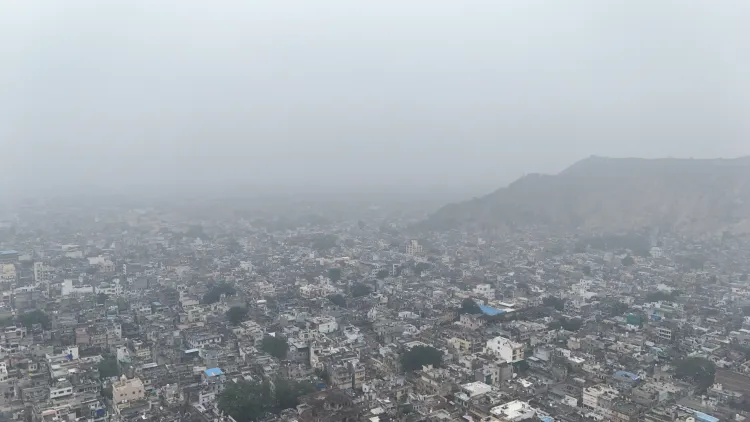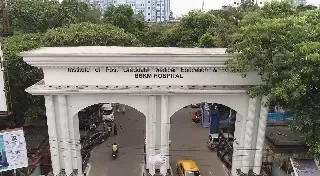Is Bhiwadi and Kota the Most Polluted Cities in Rajasthan?

Synopsis
Key Takeaways
- Bhiwadi and Kota are the most polluted cities in Rajasthan, with AQI readings exceeding 300.
- Jaipur's Sitapura area also recorded a severe AQI of 307.
- Persistent smog raises serious health risks for residents.
- Environmental experts are urging immediate action to mitigate pollution.
- Potential solutions include stricter emission controls and public advisories.
Jaipur, Nov 24 (NationPress) Following Delhi's alarming pollution situation, deteriorating air quality has now extended its reach into Rajasthan, raising serious concerns statewide as air quality declines. On Sunday, over a dozen cities, including the capital Jaipur, reported air quality ranging from poor to severe, with the Air Quality Index (AQI) exceeding 200 in at least 12 major urban centers. Bhiwadi and Kota were identified as the most polluted cities, both surpassing the 300 mark, while Jaipur’s Sitapura industrial area alarmingly reached an AQI of 307, categorizing it firmly in the severe range.
This marks the third consecutive day that Jaipur has been engulfed in thick smog, as pollutants have accumulated near the ground due to falling temperatures and stagnant winds. Throughout the day, many areas of Jaipur and its surroundings were cloaked in haze, severely reducing visibility and compelling residents to restrict outdoor activities. Environmental specialists caution that such persistent smog could lead to a surge in respiratory, cardiac, and eye-related issues, particularly among children, the elderly, and those with pre-existing health conditions.
Although pollution levels saw a slight decrease by evening, the AQI remained firmly within the poor category.
Recent AQI statistics present a troubling scenario for Rajasthan. Bhiwadi (359 AQI) led the rankings, followed by Kota (302) and Tonk (293). Jaipur also reported poor air quality at 259, while Sri Ganganagar (256), Bhilwara (253), Bikaner (249), Bundi (244), Dungarpur (222), Jhalawar (219), Bharatpur (210), and Sikar (210) were also categorized as poor.
Experts attribute this spike in pollution levels over the weekend to a combination of vehicular emissions, industrial smoke, construction dust, lower temperatures, and reduced wind speed, which have collectively trapped pollutants close to the ground. With pollution levels escalating simultaneously in Delhi-NCR and Rajasthan, environmentalists and health experts are urging authorities to implement immediate mitigation measures.
Recommended actions include stricter oversight of industrial emissions, regulation of construction activities, enhancement of public transport options, and public advisories promoting the use of masks. If decisive action is not taken promptly, many cities risk slipping into the hazardous category, posing significant long-term health risks to millions.









